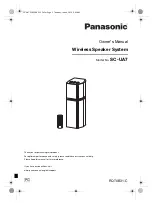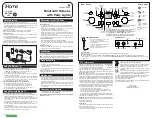
24
004778431 - 18/09/2020
Fig. 10
During the cleaning operations, support the door
with one hand to avoid excessive stresses to the
structure.
5.2 cleaning the inside of the fire box
Before performing any maintenance operation,
take the following precautions:
1) Make sure that the grate (A) (Fig. 11) is free
from any combustion residues that may ob-
struct the free passage of air. Remove it and
clean the fire box using a hand brush (not
supplied) conveying the combustion residues
into the ash drawer. Pay attention to any burn-
ing embers.
Place the grate carefully on a suitable
support surface.
A
Fig. 11
2) Extract the ash drawer (b) from the base and
vacuum out any ash deposited in the com-
partments below (
Fig. 12).
The ash drawer below the fire box
must be emptied out every day to stop
it from filling up with ash, thus caus-
ing the cast iron grate of the fire box to
overheat and preventing the flow of air
to the fire box.
3) Vacuum the front and rear holes (c) of the
combustion air distributor in order to avoid
any accumulation of ash (
C
B
C
Fig. 12
The refractory bricks undergo expan-
sion deformations during the opera-
tion of the appliance, due to the high
temperatures reached. For this reason
the slots open between one piece and
another of the refractory bricks should
be considered normal. During com-
bustion these slots are filled from the
ashes which absorb the expansions of
the refractory bricks.
5.3 cleaning the refractory panels
and smoke deflectors
Before carrying out any maintenance operation,
check that there are no burning embers.
Encrustations and deposits on the deflectors and
on the back of the refractory panels can compro-
mise the correct functioning and duration of the
appliance.
To clean the parts and the appliance properly,
use a simple brush or ash vacuum cleaner.
For cleaning it is necessary to perform the follow-
ing operations:
















































